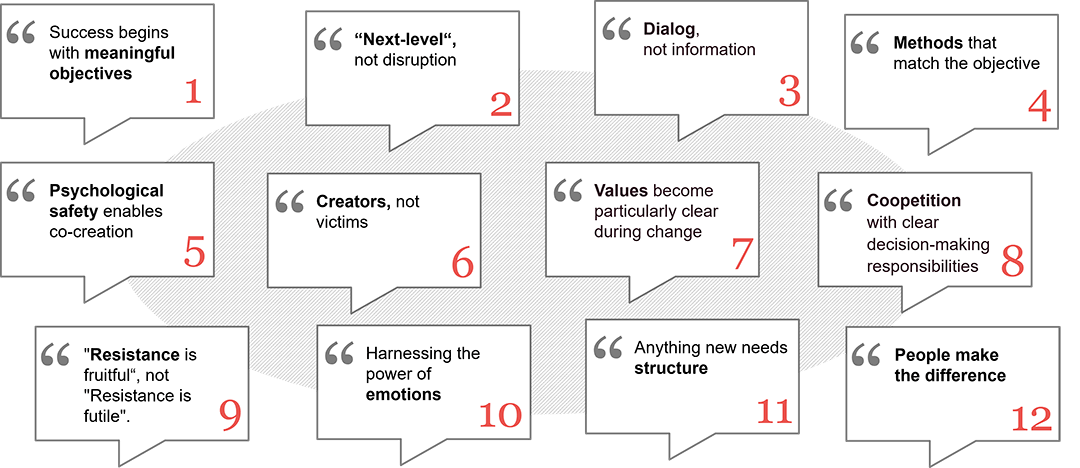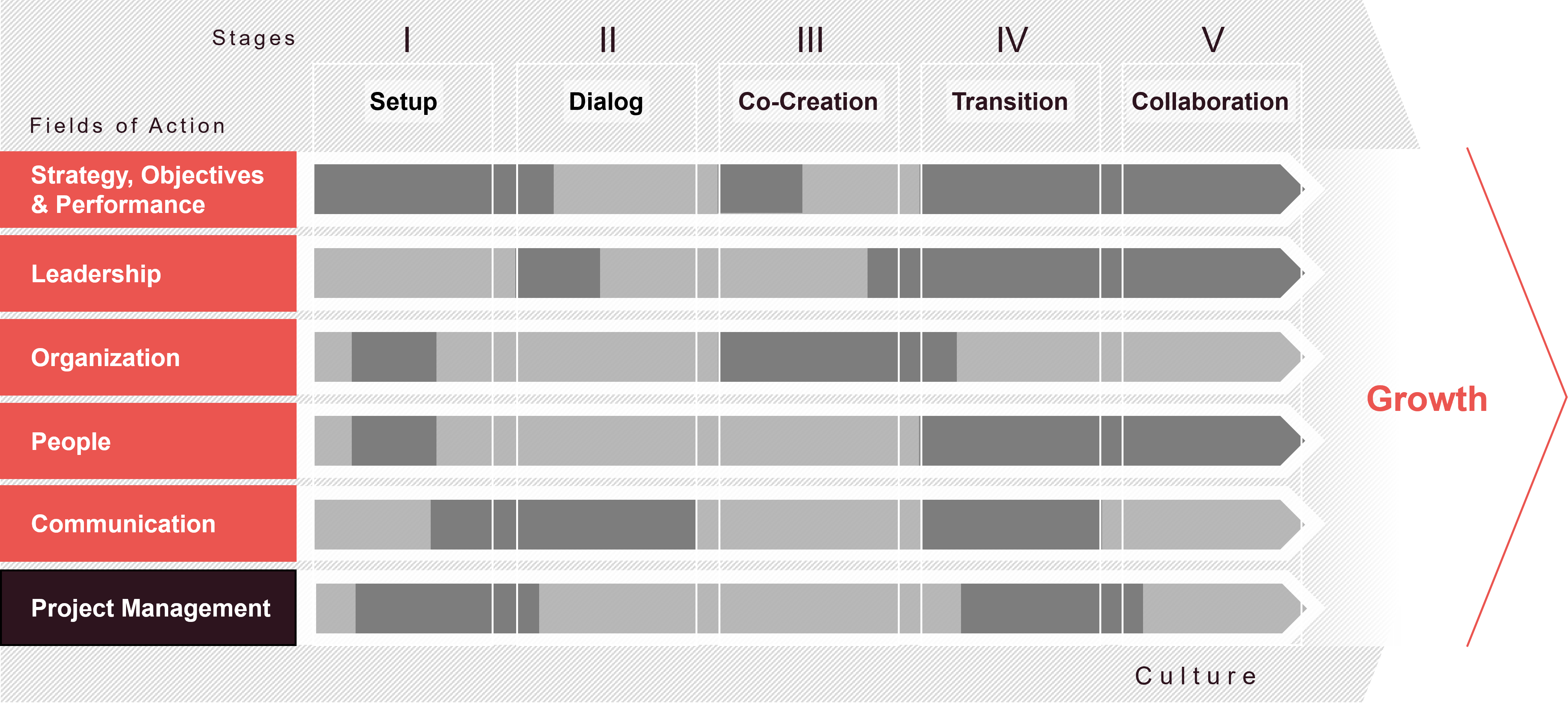Organizational change: Efficiency, Stability & Innovation
- Which structure is right for the future? For processes in which efficiency and stability are crucial and for those in which innovation and growth are the main priority?
- What kind of stable organisational units do we need, classic or agile? Which temporary and complementary structures can effectively support us in our collaboration?
- What kind of leadership functions do we want to establish - holistically responsible leaders, technical and people leads, temporary leadership roles?
In dynamic and competitive markets, companies often evolve as a result of many individual changes, in response to specific market requirements, sometimes through large-scale strategic initiatives. At some point, however, the company realises that its structures no longer meet market requirements, organisational units no longer work together in a meaningful way, the company has become too sluggish, or employee motivation is suffering.
Target-oriented adaptability is a key success factor for companies. The organisational framework must be designed in such a way that the people involved can devote their innovative drive and commitment to the company's key objectives, which are aligned with market requirements.
5P's organisational development approach takes a holistic view of business requirements, integrates cultural factors, and designs value-creating structures in a way that enables the highest levels of performance. Effective organisational development combines structured, systematic approaches with dynamic interventions that do justice to the systemic complexity of the company - together with the people without whom the organisation could not succeed.
In consultation with a large number of change managers from a wide range of organisations, we have developed the following theses:
Theses on business development

- Success begins with meaningful objectives: Change initiatives must have clear, meaningful goals that provide direction and purpose to the participants.
- "Next-level", not disruption: Changes should be understood as advancement and progress, not as disruptive interventions.
- Dialog, not information: Communication in change processes should be dialogue-oriented to foster genuine understanding and engagement.
- Methods that match the objective: Strategies and measures must be consistently aligned with the defined goals.
- Psychological safety enables co-creation: A culture of psychological safety is essential for employees to actively contribute to changes.
- Creators, not victims: Employees should be seen as active creators of change, not as passive victims.
- Values become particularly clear during change: The true values of an organization become visible and are tested during change processes.
- Coopetition with clear decision-making responsibilities: A balance between cooperation and competition within clear decision-making structures promotes change.
- "Resistance is fruitful" before "Resistance is futile": Resistance should be viewed as valuable feedback and utilized, rather than dismissed as a hindrance.
- Harnessing the power of emotions: Emotions play a central role and should be harnessed positively to support change processes.
- Anything new needs structure: Every innovation requires clear structures to be implemented effectively and sustainably.
- People make the difference: Ultimately, it is the people who make the difference and determine the success of change processes.
These theses offer a comprehensive guide for leaders and change managers who wish to guide their organizations through complex change processes. By considering these principles, they can create a supportive environment where change is not only possible but also sustainable.
Structured change for sustainable impact
Change is not a single event, but a targeted, well-supported process. At 5P Consulting, we support organisations in shaping complex change in a strategic, people-oriented and effective way. Our structured change approach consists of five clearly defined phases, each with specific objectives, formats and success factors.

Our change process: Five phases for successful transformation
1. Setup – Creating orientation and gaining clarity
The initial focus is on defining the purpose and objectives and limiting the scope of the change. We analyse relevant organisational and personnel conditions and work with the management team to develop a viable project setup. Initial communication concepts with clear core messages ensure a common understanding of the ‘why,’ ‘what’ and ‘how’ of the change.
2. Dialogue – Enabling participation and building trust
Change succeeds when people are heard. We conduct targeted dialogue formats with managers, employees and other stakeholders – whether in workshops, interviews or town hall meetings. The focus is on transparency, incorporating different perspectives and learning together. Insights from the dialogue are actively incorporated into the further project design and create the basis for acceptance and shared responsibility.
3. Co-Creation – Shaping the future together
In this phase, we work together to design the new organisation: Processes, structures and roles are reflected upon and further developed. We question existing strategies, adjust priorities and strengthen decision-making and communication channels. Participation takes place in co-creation formats that focus on dialogue, responsibility and creativity. The result is a sustainable architecture for the future – from within the organisation.
4. Transition – Implementing and embedding change
Now it's getting concrete: the concepts developed are implemented, new processes are introduced and roles are reassigned – in line with the interests, skills and potential of those involved. We actively support employees in role changes and encourage them to take on new responsibilities. The handover from the project team to the line organisation ensures that the change is firmly embedded in day-to-day business.
5. Collaboration – Strengthening culture and promoting further development
After the transition, the stabilisation phase begins. We strengthen cooperation in the newly designed organisational units and promote cross-functional work. Cooperation with external partners and stakeholders is also developed in a targeted manner. Through regular evaluations, feedback loops and targeted adjustments, we ensure that change becomes part of the lived culture.
Together, we shape change – effectively and sustainably.
Talk to us about your transformation goals.
